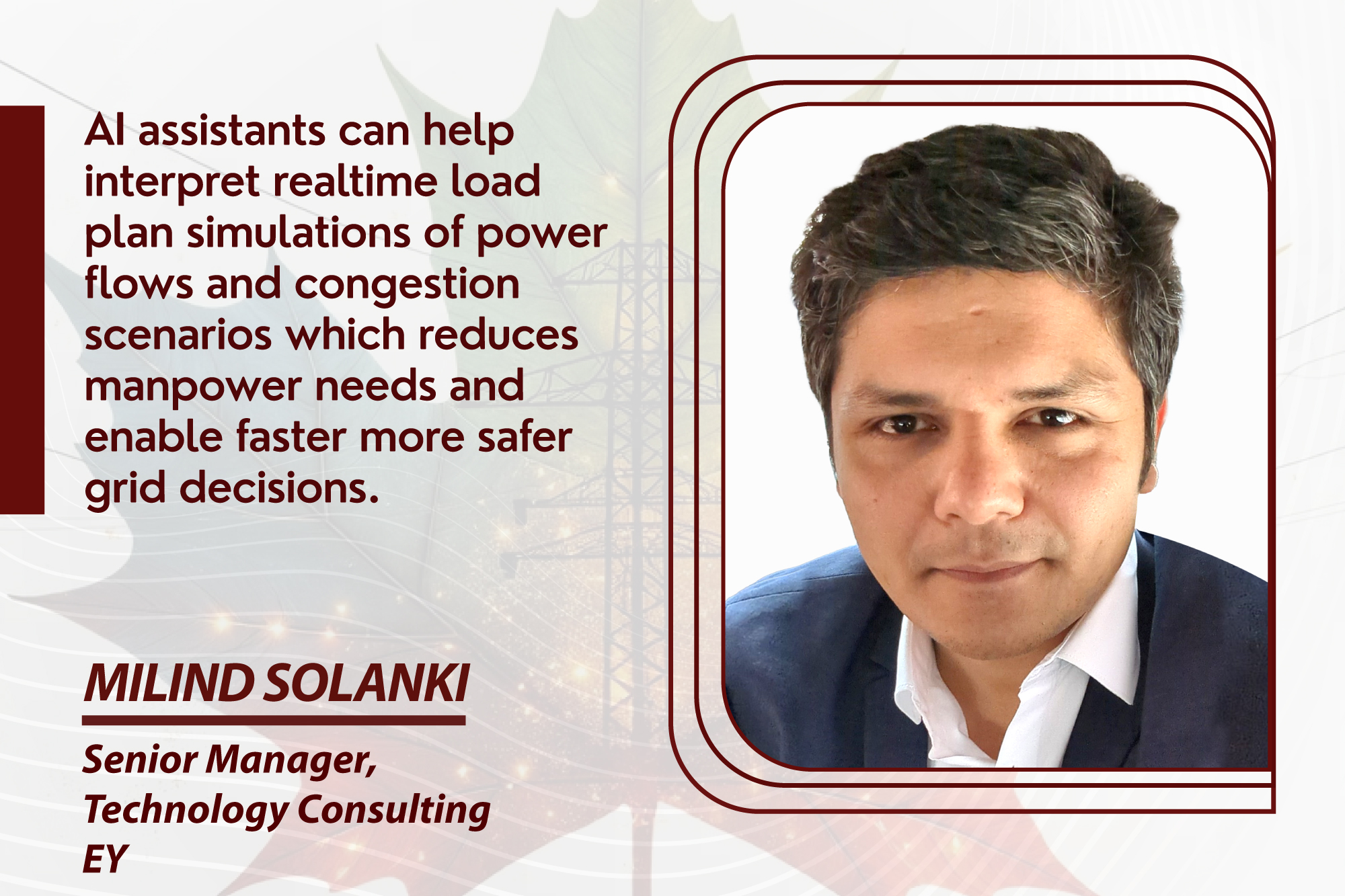Emerging technologies in T&D to power the energy frontier
By Staff Report July 25, 2025 5:49 pm IST
By Staff Report July 25, 2025 5:49 pm IST

Utilities are adopting AI and Generative AI for outage prediction, asset health diagnostics, and load forecasting.
Advancements in transmission and distribution (T&D) technologies aim to power the next energy frontier, driven by solar, wind, hydro, and nuclear sources. India has already achieved 50 per cent of its installed capacity from non-fossil fuel sources, surpassing its 2030 Paris Agreement target. As the country advances with increasing renewables, grid decentralisation, and digitalisation, there is a growing demand for next-generation T&D technologies. According to the International Energy Agency (IEA), over 80 million kilometres of power lines must be built or refurbished by 2040, and annual grid investments need to nearly double to over $600 billion to achieve net-zero goals. This demands urgent upgrades to connect substantial renewable energy capacity. Evacuation remains a challenge, and India missed its transmission line targets last year. Automation is urgently needed to drive efficiency and ensure sustainable growth of the sector.
Emerging technologies
Several emerging T&D technology trends are taking centre stage, including battery energy storage (BESS). Battery energy storage costs are falling rapidly, and grid-scale BESS deployments are accelerating. The average global price of utility-scale lithium-ion batteries dropped to $115 per kilowatt-hour in 2024, and projections indicate that it will fall below $100 per kilowatt-hour by 2025. Intelligent energy orchestration with interoperable, vendor-neutral EMS platforms is emerging as the next frontier. Utilities are adopting AI and Generative AI for outage prediction, asset health diagnostics, and load forecasting. While not yet widespread in India due to limited data, globally, there is a significant shift towards Gen AI systems for autonomous decision-making. This enables anomaly detection, fault isolation and restoration. Conversational Gen AI assistants can help interpret real-time load, plan simulations of power flows and congestion scenarios, reducing manpower needs and enabling faster, safer grid decisions. Modern substations now utilise IEC 61850 messaging, Intelligent Substation Controllers (ISCs), and adaptive algorithms for real-time fault response and self-healing. Distributed intelligence enables microsecond-level decision-making and protection switching, a trend that is gaining momentum.
The transmission utilities are transitioning from AIS to GIS substations. Smart wearables for field staff are emerging as a major innovation. AR/VR headsets, AI-enabled helmets, GPS-synced safety gear, and smart glasses (such as Meta’s Ray-Ban) are transforming utility operations. Although prices are currently high, they are falling quickly. These tools enable remote expert guidance, digital inspection evidence and improve speed, safety and compliance.
Grid connectivity and cybersecurityThe HVDC systems and satellite communications are gaining traction to balance long-distance renewable flows and interstate transfers. While satellite latency remains a concern, reliability is superior. OPGW networks, primarily owned by Power Grids, are already widespread and can support not only telecom but also robust, enterprise-wide connectivity. Utilities can extend these networks via ADSS to nearby 33 kV substations, ensuring reliable bandwidth. Emerging technologies, such as Dense Wavelength Division Multiplexing (DWDM) and Optical Transport Networks (OTN), are replacing legacy STH switches, allowing for real-time protection, encrypted SCADA, and high-speed video analytics. Cybersecurity is now mainstream in T&D given its classification as critical infrastructure. The Ministry of Power, CEA and NCIIPC have mandated utilities to set up Cyber Security Operations Centres (Cyber SOCs). Grants are being provided for the implementation of the Security Operations Centre (SOC) and Network Operations Centre (NOC), and significant adoption is expected in the immediate future.
Together, these innovations define the future of the transmission and distribution (T&D) sector as smarter, faster, safer, and more resilient. To achieve the next leap in the energy transition, India must rapidly scale up these emerging technologies, underpinned by policy support, strategic investments, and infrastructure upgrades.
************************
We use cookies to personalize your experience. By continuing to visit this website you agree to our Terms & Conditions, Privacy Policy and Cookie Policy.